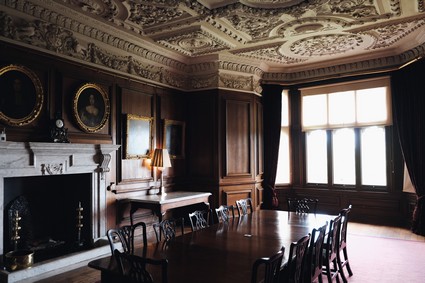
30 Aug 2021 The history of fireplaces [a timeline]
Have you ever stared into your fire, the dancing flames casting a spell on you and making you wonder where they came from? The difference between your cosy indoor fireplace and a primal, outdoor campfire in the wilderness is vast and we often forget how it all started. So, how have our fireplaces evolved from when the sparks of a flame were discovered, to today’s many choices? Let’s find out…
- Stone Age – It all starts way back when. Fire was discovered in the Stone Age and people would make them where they could be contained – caves or enclosed areas. They would be kept burning constantly as a source of warmth and to cook. Due to the lack of ventilation, the smoke would often cause toxic fumes.
- The Celts – To protect their flame from the elements, the Celts created a central firepit inside a hut, which would have a hole in the top from which to expel the smoke. The hut was big enough for dwellers to gather around the fire.
- The Romans – Similar to outdoor firepits that many of us have in our gardens, the Romans created portable hearths that could be carried wherever they needed it. This suited their lifestyles much more than a permanent fixture.
- 1066 – It turns out 1066 has more significance than our history lessons told us about! This is when the fireplace was first introduced – due to the development of two-storey houses the chimney was invented for proper smoke disposal.
- 1600–1700s – Although fireplaces in separate rooms were common, there was frequently a walk-in fireplace kept running throughout the day for cooking and gathering. The fire was made in the middle of the room with a chimney above it.
- 1742 – Benjamin Franklin invented the Pennsylvania fireplace, which was the first cast iron stove. Around this same time, fireplaces became the centre-piece of a room and guests would gather around it of an evening.
- 1796 – Count Rumford introduced Rumford fireplaces, which were tall and shallow fireboxes to prioritise expelling smoke efficiently. The result of these Rumford fireplaces is the design basis for most fireplaces today. It had sharply angled covings for more heat output.
- 1800–1900s – By the 1800s fireplaces had two parts – the surround and the insert. Materials used were wood, marble, granite and cast iron. Decorative elements were also beginning to be favoured in the Victorian era, with the inclusion of patterned tiles and ornate overmantels (these are treasured finds today!).
- 1980-1990s –The introduction of sustainable solutions and the development of gas fires is fairly recent. Living flames and flame effects became common and gas fires were made to minimise smoke pollution in our atmosphere.
- 1995 – Not too long ago, the first electric fire was created. The introduction of these meant that modern homes without a chimney did not have to miss out on the allure of a fireplace, as well as protecting the environment.
- Today – Today, we are able to prioritise functionality as well as style, with all types of fireplaces available in any design – from rustic or vintage to minimalistic and sleek. The choices are inspired by the history of all fireplaces that have come before!
At Fiveways Fires & Stoves, we have many styles that can compliment your home, and better yet we can help you choose which one to install! So, next time you’re looking into your fire or admiring your surround, take a minute to think about how far fireplaces have come since the Stone Age!
To ask us any questions about what fireplace would work for you, call us on 0208 127 4747 or email . We’d be happy to help you out.


